Best practices for airport notifications.

For anyone that wants to fly an sUAS, it’s important to know that Public Law 112-95 §336(a)(5) requires that when an sUAS is to be flown within five miles of an airport, “…the operator of the aircraft provides the airport operator and the airport air traffic control tower (when an air traffic facility is located at the airport) with prior notice of the operation…”
I’m fortunate to have a small park within a block of my home where I can fly my RC helicopters, but both my home and the park are inside that five-mile ring from a hospital heliport and a class D (towered) airport. Through a combination of prior experience and recent practice, I’ve become proficient at these notifications. After a tower controller complimented me last weekend, adding, “I wish everyone did it like you do,” I thought I’d write something so that everyone could benefit.
I spent my entire career flying tactical jets in carrier-based Naval Aviation, a world where communications brevity is raised to an art form. At nine miles a minute, you don’t use two words when one will do and you don’t talk at all if not absolutely necessary. Crisp, clear, unambiguous, and brief communications are necessary in TACAIR, so I built many good habits over that 22-year career. I found that these same good habits made my airport notifications go very smoothly.
The law says that you have to notify airports, but the law does not say how to do it. If you can get a permanent written agreement, then great. This info will help you put together a good first draft of information they’d likely need.
But nothing says that the airports have to agree to accept it. Trying to force it on them only makes your life tougher—they get 51 percent of the vote. My local airport said that they wanted calls each time, so I didn’t argue. I do it the way they asked.
Diese Geschichte stammt aus der November 2016-Ausgabe von Model Airplane News.
Starten Sie Ihre 7-tägige kostenlose Testversion von Magzter GOLD, um auf Tausende kuratierte Premium-Storys sowie über 8.000 Zeitschriften und Zeitungen zuzugreifen.
Bereits Abonnent ? Anmelden
Diese Geschichte stammt aus der November 2016-Ausgabe von Model Airplane News.
Starten Sie Ihre 7-tägige kostenlose Testversion von Magzter GOLD, um auf Tausende kuratierte Premium-Storys sowie über 8.000 Zeitschriften und Zeitungen zuzugreifen.
Bereits Abonnent? Anmelden
Legend Hobby / Seagull Models - Cessna Grand Caravan 208
The Cessna Grand Caravan 208 is a legend in aviation circles. A single engine utility aircraft that punches up with capabilities that rival many twin engine aircraft in its class. Its seemingly simple configuration belies its near extreme utility.
PROPER CG LOCATION FOR AEROBATICS
If you are getting into aerobatics and are starting to perform more advanced maneuvers, it is time to discuss ways you can not only become a better pilot, but how you can also improve the flight characteristics of your airplanes.
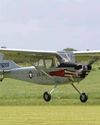
Legend Hobby 13-Foot L-19 Bird Dog/ Cessna O-1
This famous multi-mission single engine observation aircraft served from 1950-1974. From calling out target locations to providing intel/recon information, the Bird Dog was a valued asset in both the Korean War and Vietnam.
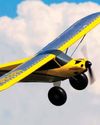
EARN YOUR WINGS
10 Tips for First-Flight Success
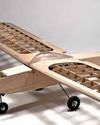
Old School Model Works Fifty Six
The Fifty Six takes its design cues from the original .09- to .15-size Carl Goldberg Falcon 56 of the 1960s. Reworked to incorporate modern, lasercut techniques to make kit building better than ever.
FLYING TWINS Multi-engine warbirds made easy
Let’s face it, there’s just something extra special about twin-engine RC aircraft. Most modelers stop what they’re doing when a twin fires up on the flightline.
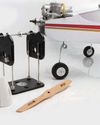
HOW TO BALANCE PROPELLERS
Four easy steps to increase performance and reduce vibration
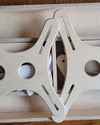
PRODUCT REVIEW: RC PLANE STANDS BENCHTOP MODEL
I’m a sucker for shop stuff. I buy tools I will probably never use just because they are cool, or I might need to use them someday. When Glen from RC Plane Stands reached out about a review, however, I knew as soon as I browsed their website that I would be receiving something I would use a lot, maybe even daily.
SPIRIT OF RHINEBECK AWARD WINNER
A close up of Norman Malinowski’s 1/3-scale Albatros
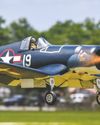
CENTER OF GRAVITY BASICS
The secret to a plane that flies well